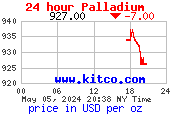adsense
Gold Silver Price Per Ounce Spot Gold Per Gram Spot Silver Per ounce kilo Precious Metal Investing News Close Review Open Today’s
 5:32 AM
5:32 AM
 Unknown
Unknown
Gold Silver Price Per Ounce Spot Gold Per Gram Spot Silver Per ounce kilo Precious Metal Investing News Close Review Open Today’s
mines,gold,silver,oil,gazz,coal,prices,market,asia, europa,america,africa
South African Price-Producer Inflation Accelerates to 6.9%
 5:25 AM
5:25 AM
 Unknown
Unknown
South African Price-Producer Inflation Accelerates to 6.9%
mines,gold,silver,oil,gazz,coal,prices,market,asia, europa,america,africa
Oman Oil Price Falls a Second Month on Supply Gain june 2011
 5:19 AM
5:19 AM
 Unknown
Unknown
Oman Oil Price Falls a Second Month on Supply Gain june 2011
mines,gold,silver,oil,gazz,coal,prices,market,asia, europa,america,africa
Saudi boosted to highest level by soaring oil prices foreign assets hit $480 billion in May, 2011
 5:12 AM
5:12 AM
 Unknown
Unknown
Saudi boosted to highest level by soaring oil prices foreign assets hit $480 billion in May, 2011
mines,gold,silver,oil,gazz,coal,prices,market,asia, europa,america,africa
gold prices chart and table today
 9:19 AM
9:19 AM
 Unknown
Unknown
gold prices chart and table today
mines,gold,silver,oil,gazz,coal,prices,market,asia, europa,america,africa
Prices in table below are as of close of COMEX & NYMEX
Updated
06/24/2011 Today Change Week Ago Month Ago Year Ago
Gold $1,501.60 -$19.30 $1,538.00 $1,524.85 $1,245.50
Silver $34.70 -$0.34 $35.78 $36.20 $18.75
Platinum $1,679.10 -$18.10 $1,755.00 $1,764.50 $1,550.60
Palladium $733.90 -$13.20 $744.55 $737.70 $473.00
Prices in graphs below are from GLOBEX, which are "live" except weekends and 3:15 p.m. to 4:00 p.m. EST, Mondays through Fridays.


gold price per gram of yuan
 9:07 AM
9:07 AM
 Unknown
Unknown
The Gold Price Will drops, Aiming at $1,486.50, then $1,460 - $1,450, then the 200 DMA at $1,410
 9:01 AM
9:01 AM
 Unknown
Unknown
Oil Prices Falling Low to Six-Month
 5:44 AM
5:44 AM
 Unknown
Unknown
The price of Kuwaiti crude oil came down 61 cents to reach USD 105 per barrel (pb)
 5:36 AM
5:36 AM
 Unknown
Unknown
Crude Oil Prices Weekends
 5:29 AM
5:29 AM
 Unknown
Unknown
Heating Oil Dealers makes Standing Against Speculators
 8:07 AM
8:07 AM
 Unknown
Unknown
Heating Oil Dealers makes Standing Against Speculators
mines,gold,silver,oil,gazz,coal,prices,market,asia, europa,america,africa
Heating Oil Price in UK Trend for June 22nd 2011
 7:56 AM
7:56 AM
 Unknown
Unknown
Gold and Silver's prices Daily June 22nd, 2011
 6:03 AM
6:03 AM
 Unknown
Unknown
Gold and Silver New Prices June 21 2011
 5:39 AM
5:39 AM
 Unknown
Unknown
Spot gold price per gram kilo spot silver price per ounce kilo contract gold and silver price trends today
 1:47 AM
1:47 AM
 Unknown
Unknown
gold remains a store of value after Greek crisis looms
 1:36 AM
1:36 AM
 Unknown
Unknown
gold prices $1,600 Gold in 2011 by Standard Bank Forecasts
 1:29 AM
1:29 AM
 Unknown
Unknown
Caltex Sees Lower/Higher Profit update
 5:54 PM
5:54 PM
 Unknown
Unknown
iraqi dinar exchange rate today
 5:37 PM
5:37 PM
 Unknown
Unknown
The Exchange rate for Iraqi Dinar
South African Coal Prices Climbing to Highest in a Month
 5:27 PM
5:27 PM
 Unknown
Unknown
New Stocks Gain for Third Straight Session (AAPL, AGU, BAC, BIIB, CAT, DD, DFS, F, HUM, JCP, JPM, JWN, MCP, MOS, NBR, PCX, PNC, RIMM)
 5:18 PM
5:18 PM
 Unknown
Unknown
 Posted in
asia,
europa,
market,
prices,
production
Posted in
asia,
europa,
market,
prices,
production
Aussie, NZ leaders considering links carbon schemes 2011
 5:07 PM
5:07 PM
 Unknown
Unknown
Metals & Mining - Govt's coal pricing policy; neutral for listed producers - Deutsche
 4:59 PM
4:59 PM
 Unknown
Unknown
Gold and Silver Prices – today Outlook 20 June 2011
 2:09 AM
2:09 AM
 Unknown
Unknown
Gold and Silver Prices – today Outlook 20 June 2011
mines,gold,silver,oil,gazz,coal,prices,market,asia, europa,america,africa
Gold and silver prices finished the week with rises, but they are off to a slow start today. The concerns over the European debt crisis (Greece) will be among the main topics of the day that could affect the financial markets, but will it also affect gold and silver prices? Let’s examine the news of the day and analyze the precious metals market for June 20th:
Gold and silver prices – June
Gold price finished the week rising by 0.6% to $1,539.
Silver price also inclined on Friday, June 17th by 0.53% to $35.75.
During June, gold price increased by 0.1%, and silver price declined by 6.7%.
The chart below shows the normalized gold and silver prices (May 31st 2011=100).
This finding only goes to show that the relations between currencies and gold and silver are reliable; it also shows that gold and silver weren’t affected by the recent changes in US dollar compared with other currencies. This might also indicate that the demand for gold and silver will remain high as they further inclined last week despite the appreciation of US dollar.
Current Gold and Silver prices
The precious metals prices are currently traded with little changes in the Asian markets:
The current gold price, short term futures (July 2011 delivery) is traded at $1,538.3 per t oz. with a $0.8 drop or 0.05% as of 06:51*.
Current silver price, short term futures is at $35.66 per t oz – a $0.088 decline or 0.25%, as of 06:51*.
The current ratio of gold to silver prices is at 43.13.....READ MORE




















